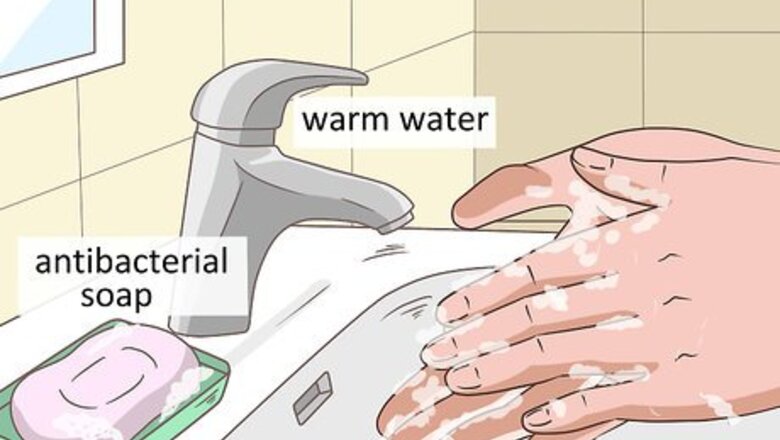
views
Loosening it with Clean Fingers or a Toothbrush
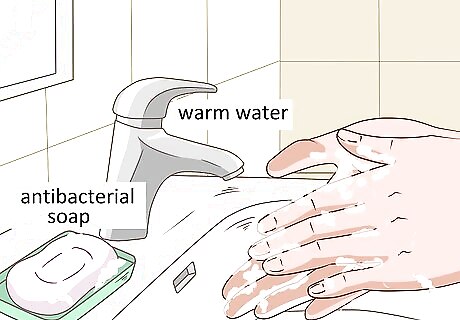
Wash your hands well. Before you touch the tooth with your fingers, make sure you wash your hands really well. Use antibacterial soap and warm water to scrub your hands. Remove all dirt, bacteria, and germs on your hands. This will ensure they do not get into your mouth or onto the tooth when you touch it. You can also wash your hands with hand sanitizer if you do not have access to running water. The hand sanitizer should contain alcohol and be antibacterial. If your child is trying to loosen their tooth, make sure they wash their hands well. You may wash their hands for them to make sure they are clean.
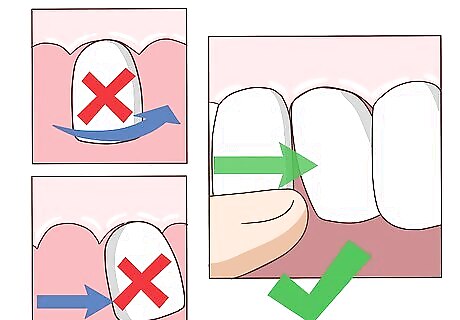
Wiggle the tooth with your finger. Use your pointer finger to gently wiggle the tooth in the socket. Do not twist the tooth or push it from side to side as this can cause pain and damage the gum area. Instruct your child on how to do this so they do not damage the tooth or their gums. Baby teeth that are fully erupted by the age of three should wiggle around fairly easily. Teeth that are not ready to come out may not move around much when you try to wiggle them.
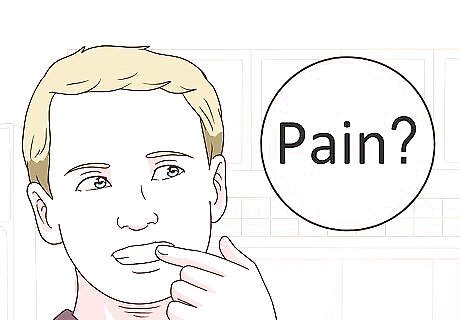
Check if there is pain when you wiggle the tooth. Notice if you feel pain when you wiggle the tooth around. If you feel any sharp pain when you move the tooth, it is likely not ready to come out. Let the tooth sit in your mouth until you can wiggle it without any pain. Only then should you try to loosen it more or remove it.
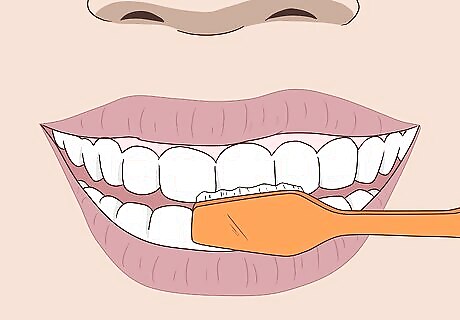
Brush the tooth to loosen it. Another way you can remove the tooth is to brush your tooth with a toothbrush. Use the wet toothbrush to gently wiggle at the tooth. Do not rub the tooth hard or scrape at it with the toothbrush. If the tooth feels loose when you brush it and you don't feel any pain, it may be ready to come out. Otherwise, you may want to leave it alone until it falls out on its own.
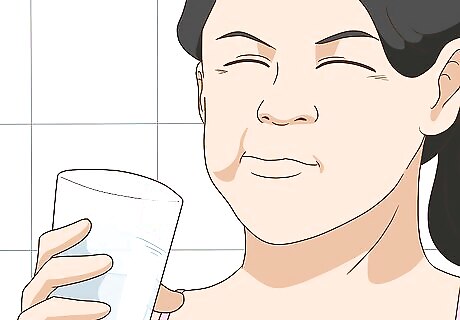
Rinse your mouth if the tooth falls out. If the tooth falls out on its own, it should not bleed much. Rinse your mouth out with water to remove any blood in the socket. If the tooth is knocked out or wiggled out, it may bleed more. You may need to bite down on a piece of clean gauze or a towel to soak up the blood. It can take up to an hour for the bleeding to stop.
Eating Crunchy Foods
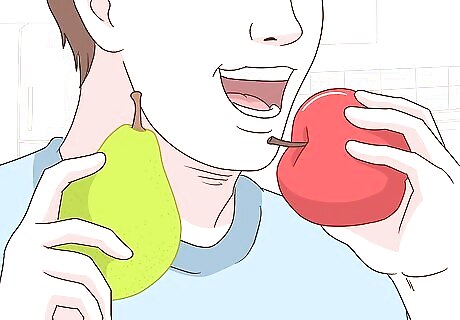
Bite into an apple or a pear. Apples and pears are crunchy and can help to loosen up a tooth. Have apple or pear slices. Try biting into an apple to make the tooth more loose. Do not try to drag the apple or pear against the tooth to help loosen it. This could damage the tooth and the gum area. Instead, bite and chew the apple or pear to loosen the tooth.
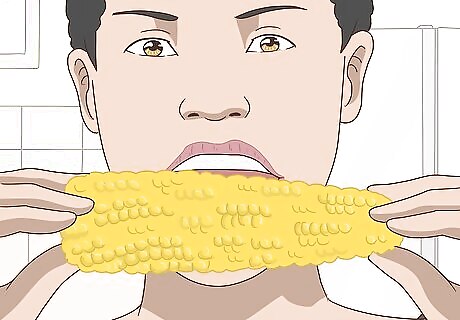
Try corn on the cob. Another good crunchy food for loosening a tooth is corn on the cob. Bite into corn on the cob to help loosen your tooth from the socket.
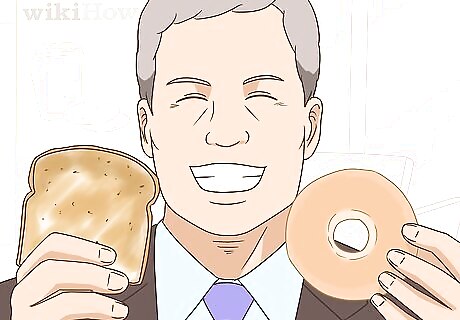
Have bread or a bagel. Soft but crunchy foods like bread or a bagel are also a good option for loosening a tooth. Bagels in particular are just soft enough to loosen your tooth without damaging it. Toast the bread or the bagel so it is crunchy and can help to loosen the tooth.
Seeing Your Dentist
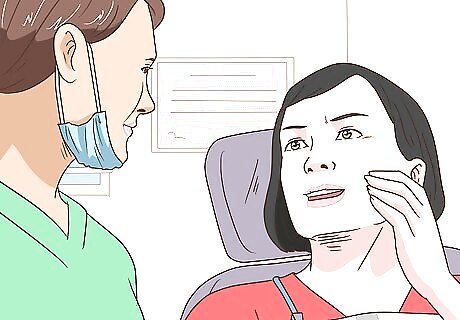
See your dentist if you have a loose adult tooth or the tooth is infected. Adults often develop a loose tooth due to grinding their teeth or gum disease. In some cases, the tooth can be knocked loose due to trauma to the mouth. If you have a loose adult tooth or you suspect the tooth is infected, see your dentist for treatment. A tooth is likely infected if it is sore or painful to the touch. The gum area around the tooth may also be painful, swollen, or red. If you notice your child has a loose tooth that appears infected, bring them to the dentist right away.
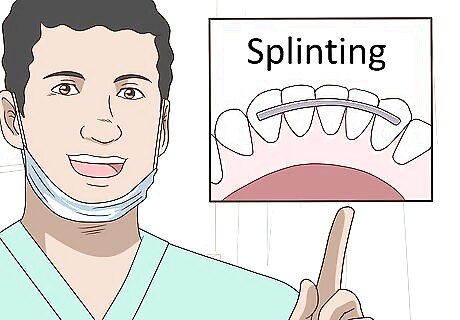
Speak to your dentist about your treatment options. Your dentist will assess the tooth and determine if it is infected. They may provide extra support to the tooth, such as a small flexible splint, to keep the tooth anchored and stable. You will need to wear the splint for two weeks so the tooth can heal and go back into place. If you have a loose tooth due to grinding your teeth, known as bruxism, you may need to wear a special mouth guard at night when you sleep. If you have a loose tooth due to gum disease, you may need to have deep cleaning done on the tooth.
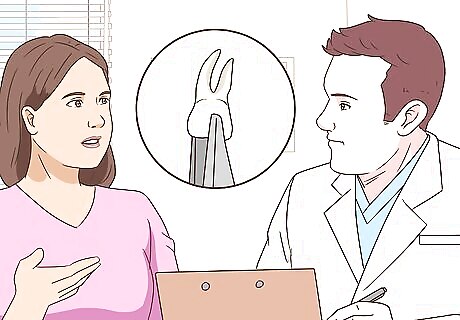
Discuss removing the loose tooth, if necessary. If the tooth is too loose to be saved and is very infected, the dentist may recommend removing it. They will do a tooth extraction, numbing the area so you do not feel any pain when it is removed. You may then need to wear a dental implant or a partial denture to replace the tooth. Having an implant will prevent your other teeth from pulling out of their sockets to try to fill the space.
















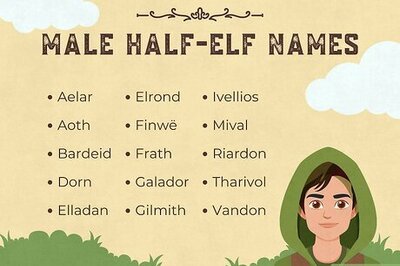

Comments
0 comment